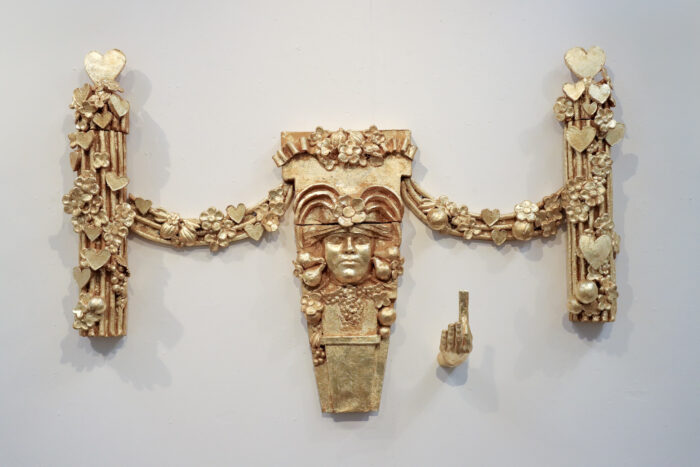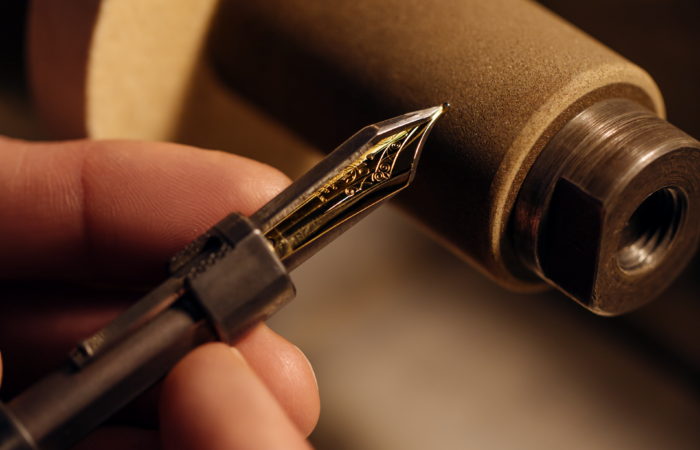Maker in Focus: Miriam Hanid
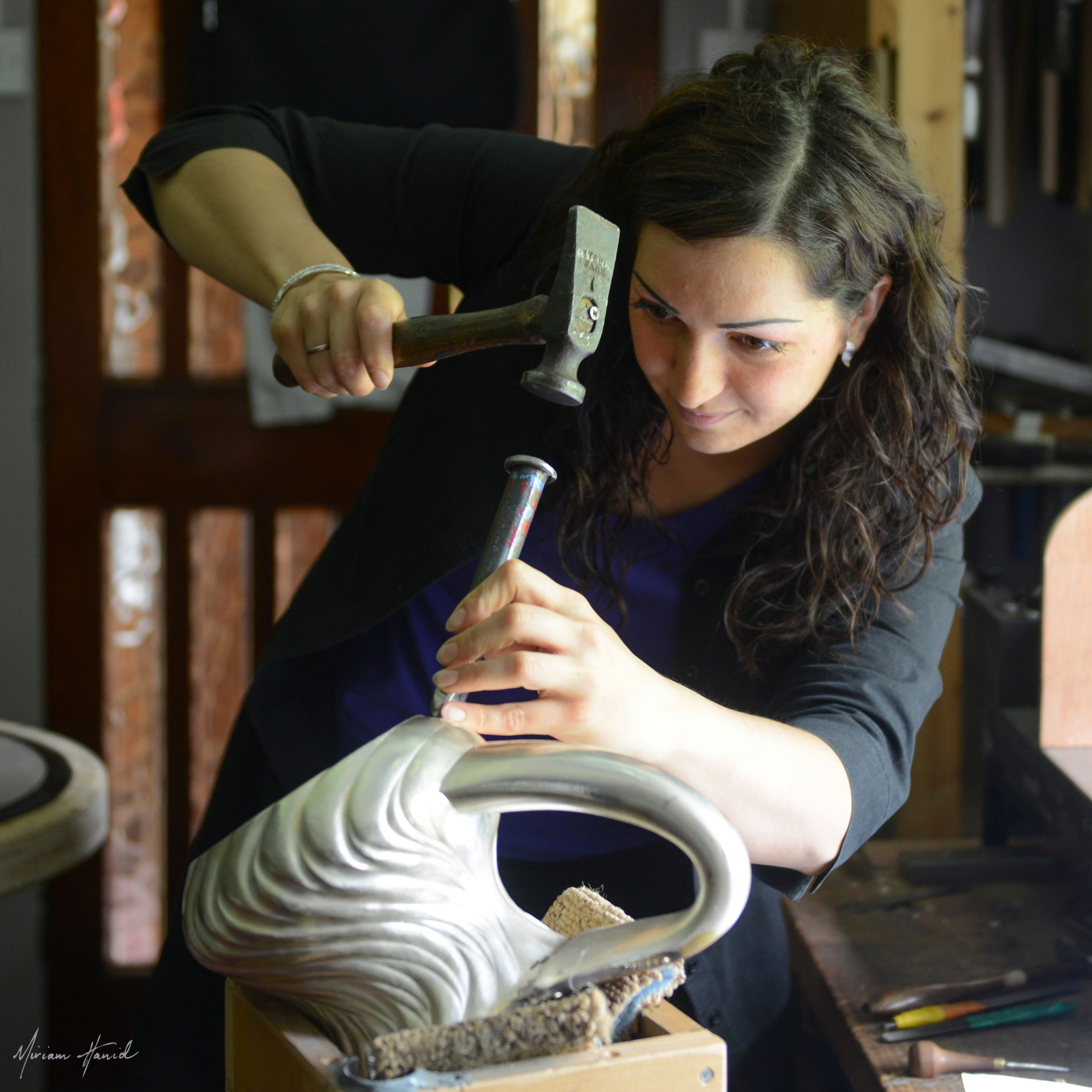
“For me LCW is a gigantic and inspiring multi-event where I as a maker can share my work with a passionate audience who really looks, listens and sees.” – Miriam Hanid
For December’s Maker in Focus interview, we spoke to artist and silversmith Miriam Hanid about her progression from 2D to 3D, how the essence of movement in water inspires her practice, and the value of craft in creating shared experiences.
Miriam exhibited at ‘Walpole’s Makers of the Exceptional’ during LCW 2018, a programme at Battersea Power Station celebrating a decade of makers across various disciplines demonstrating their skills and talking about their inspirations.
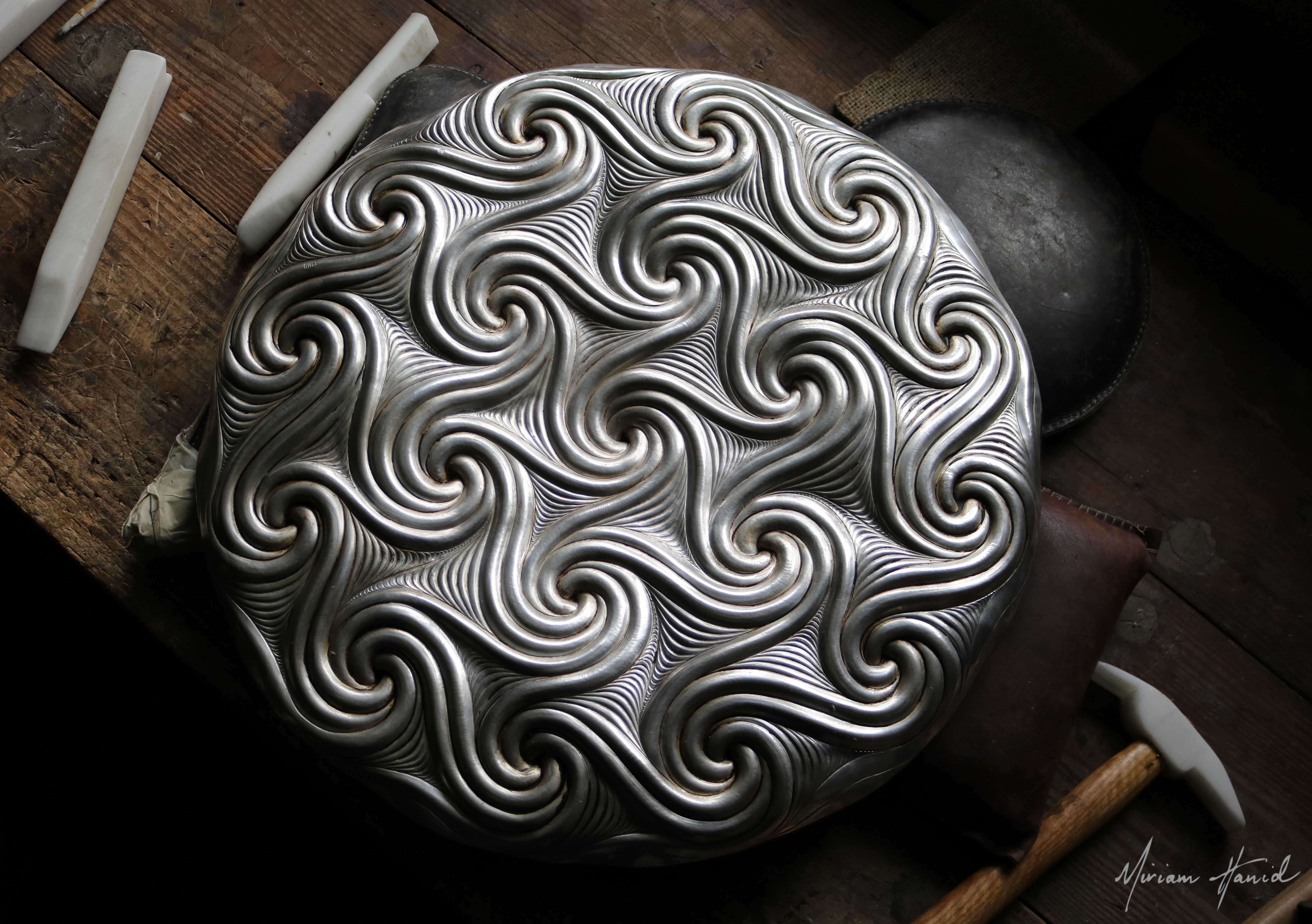
LCW: What is your background? What drew you to making?
MH: I began my journey into silversmithing at the age of four, when I often loved to paint and draw. One day I used the spiked end of a large umbrella to ‘engrave’ bold letters and curved shapes on to the hallway wall of our family home. I was pleased with my outpouring of self-expression but it was to be some years before I was to experiment with engraving again!
At school, I pursued my love of painting, and gradually moved towards a 3D approach by working in mixed media, adding collaged elements to oil paints, watercolours and oil pastels to produce textured pieces. On reflection, the bold colours and designs at this time in my life shaped the style of my current work and allowed me to more fully explore my creative approach.
My introduction to 3D work was through an A-level art project in which I created a triangular Art Nouveau-inspired lamp in leaded glass. I instinctively felt that 3D work was what I wanted to pursue and after my A-Levels I began studying for a degree in Three Dimensional Design (Metalwork and Jewellery) from the University College for the Creative Arts at Farnham, graduating in 2007.
LCW: How have you developed your career?
MH: While at Farnham I was introduced to chasing and repoussé and began working with large sheets of metal, approaching the pieces freely, as I would with a painting. From 2007 to 2008 I attended the Post-Graduate Training Course for Jewellers and Silversmiths at Bishopsland. This was a milestone on my creative path, and is where I developed the chasing, forming and engraving techniques that have since become my signatures. I have also undertaken specialist in-depth training with a number of highly experienced and skilled silversmiths including Malcolm Appleby, Rod Kelly, Ndidi Ekubia, Tony Bedford and Ray Walton.
I have been working as a professional silversmith since 2008, creating pieces for private clients and public commissions, including the Worshipful Company of Goldsmiths, Eton College, New College Oxford, The Victoria and Albert Museum and the National Museum of Wales. I have also won a number of awards at The Goldsmiths Craft and Design Awards.
In 2012 I was asked to produce an engraved silver band as part of a dressed walking stick that was presented to the Queen for her Diamond Jubilee. In Kenya exactly sixty years earlier in 1952, my great-grandfather made two gifts for the Queen when she visited the country. I feel honoured to be part of a lineage of craftsmanship and engineering within my family.
LCW: Take us through your typical day…
MH: I wake up and meditate for 40mins to 1 hr, then write in my journal.
After breakfast, I go to the workshop and quickly plan out the work for the day, often using a list of my ‘big 3’ tasks. These could be anything from progressing and finishing a silver piece and posting it, ordering silver, sending designs to clients, updating my website pages, writing a mailout, preparing for the next big event, or writing content for my blog. I attend to emails as fast as possible then get on swiftly to silversmithing – I like to get stuck into the most important project in the morning when I have the most clarity and focus. After lunch which is often spent with my dog in the garden, I carry on with my project and often find it hard to pull myself away from my work to take the dog for a walk!. I always tidy my bench at the end of the day, even just into an organised mess rather than putting everything away, as I still may be working on the project for the next few days or weeks. Coming into at least a partly organised workspace helps my mind stay clear the next day. I maintain focus by putting any half-finished pieces away so they are out of sight while I’m concentrating on my ‘Big 3’. By having just 3 fairly substantial tasks on my list for the day, if I accomplish more I leave with a feeling of great satisfaction, but if I tick all 3 jobs off my list, I still leave the workshop feeling great about my progress and ready for rest.
LCW: Where do you draw inspiration from in the creation of your work?
MH: The essence of movement in water is the main inspiration for my work.
I feel that it is synonymous with love in all its physical and metaphorical representations. In water there is an endless, never repeating range of forms and patterns, each with its own unique and intricate beauty, giving me an infinite visual language with which to express my ideas.
Water makes up life – it flows throughout nature and is part of all living things. For me, this also represents divine love, all-permeating and free-flowing among beings and the other boundless possibilities of life.
These ideas manifest themselves in visual themes that relate to nature such as the waves, ripples and reflections found in water, layers of sedimentary rock, and the subtleties of texture and pattern found in wood grain, snowflakes and frost.
LCW: What role does craft and making have in society?
MH: There are of course many facets to this important role! One thing which springs to mind is that craft and making can bring people from many walks of life together in a shared experience – whether of buying, making, listening to a talk or visiting an exhibition – an inspiring shared experience.
LCW: How long does it take for someone to really build confidence in their craft?
MH: However long they decide to take to build their own confidence! I like the phrases ‘hard work in any area always brings results’, and ‘where attention goes, energy flows’!
LCW: If you were a type of biscuit what type would you be?
MH: Quadruple Chocolate Cookie – no nonsense.
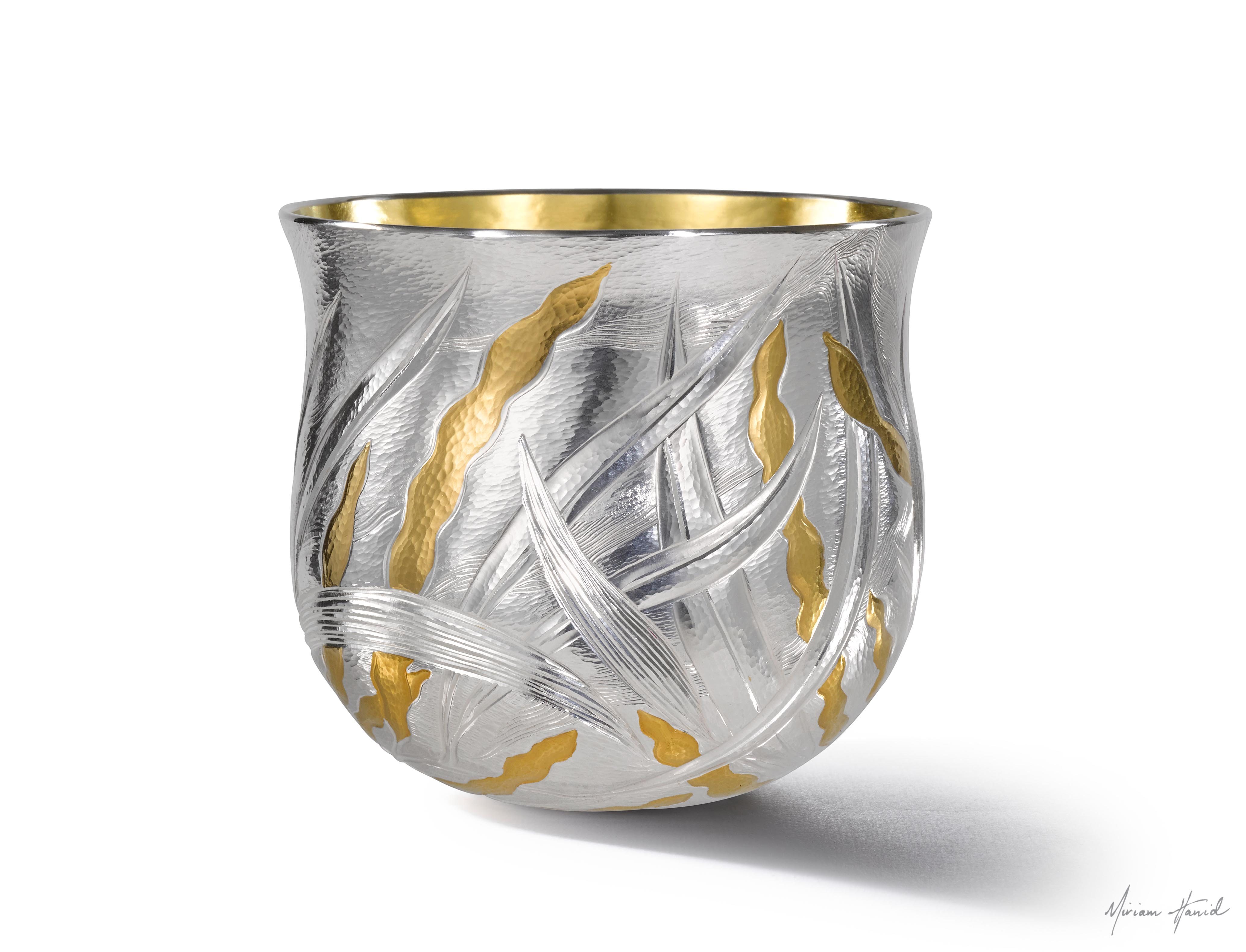
LCW: What’s one thing you would most like to own?
MH: A lake or woodland – even if only for this life – and the necessary resources to maintain and look after them, hopefully improving them over time!
LCW: What are the positives/negatives about being a craftsperson today?
MH: Positives are: being my own boss, using my own intuition and guidance on what direction to take at any given moment, choosing how much or little to invest in my greatest asset – myself. Being able to take time off when I want to, and being the experiment, the experimenter, and the result of that experiment all at once!

LCW: Do you have someone that you idolize? Craftsperson or otherwise.
MH: I don’t idolize anyone, but there are many people with great skills which I admire – such as the unique and intriguing engraving of Malcolm Appleby.
LCW: What is craft to you? What does it represent?
MH: Observing, making, infusing, playing, meeting and reaping. Not necessarily in that order and not all have to be present!
Discover more at www.miriamhanid.com
